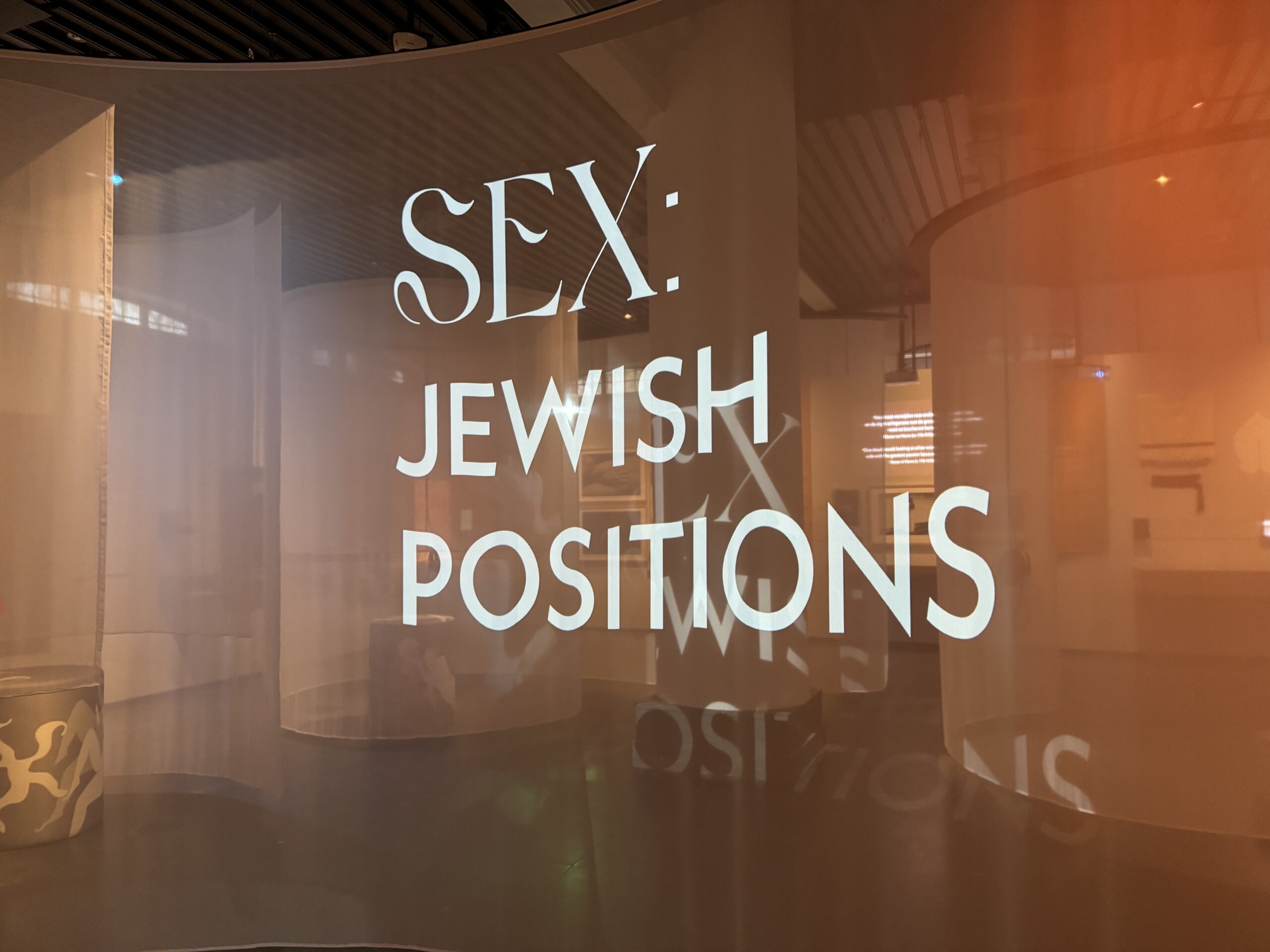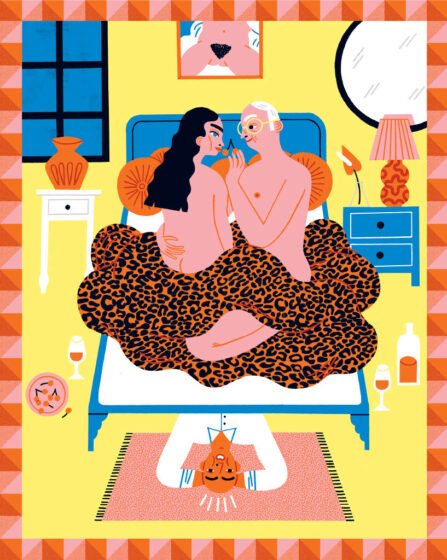Make love not war: Jewish Positions explores colourful sex lives
Senay Boztas
Putting the “s” in exhibition, a new show at the Jewish Museum in Amsterdam shows the racier sides of a religion, life and culture through the ages.
Sex: Jewish Positions, which runs until May 2025, aims to illustrate that an orthodox point of view is far from the only version of intimate relations in Jewish communities.
In rooms divided by seductive net curtains, the show covers both light and serious aspects of reproduction, freedom, spirituality and diversity in a community that has been both attacked and misunderstood for its sexuality in the past.
Mirjam Knotter, chief curator, said the show was originally inspired by the 2020 Netflix series Unorthodox, about a Jewish woman in Brooklyn fleeing from an arranged marriage and to Berlin.
“I’m very aware of stereotyping of Jewish people and of Jewish life – something you also feel in this series, where people get the image of a sex life in a very closed, orthodox community,” she said. “But we thought: where are all of the other perspectives, of queer Jews, feminist Jews, secular Jews?
“One of the missions of the Jewish Cultural Quarter is to bring to public awareness the pluriformity of Jewishness, to connect with a diverse public. And with sex, everyone has an attitude towards it, everyone has a point of view.”
The show has been created with input from rabbi Joram Rookmaaker from the Liberal Jewish Community in Amsterdam – who brought his wife to the press opening – and in cooperation with the Jüdisches Museum Berlin.
It explores both traditional texts and their relation to mores around sexuality – the sanctity of marriage, for instance, the importance of having children, and the orthodox rules prohibiting self pleasure that might amount to “wasting seed”. But it also takes a broader view, with audio interviews with 10 Amsterdammers about sex and their sex lives, exploring eroticism and diversity particularly visible in modern Jewish lives but with a history too.

Female pleasure first is strongly suggested by one 13th century mystical Jewish text on display, for instance, while part of the exhibition looks at the “homoerotic nature” of medieval Hebrew poetry. It highlights the role of Jewish figures from Sigmund Freud to Ernst Gräfenberg, inventor of a 1920s silk contraceptive ring, and the man who inspired the term “G-spot”.
Curator Joanne Rosenthal said one of the more controversial items in the show is a stalag book. Now rarely-displayed collectors’ items, these pornographic bestselling novels in 1960s Israel were based on sexualised violence in Nazi concentration camps, often plotted around female SS guards abusing Allied prisoners of war and prisoners taking their revenge.
“The idea of transgression in sex is going to the limits,” said Rosenthal. “It’s tricky, but this is an expression of uncomfortable sexual desire. A lot of scholars say this is a form of processing trauma too.”
Other curios range from uncomfortable thumb shields to stop any inadvertent night-time self-pleasuring activities to a “reproductive freedom kit” produced by the National Council of Jewish Women after the US Supreme Court overturned constitutional abortion rights in 2022.
Art ranges from an intricate papercutting by Ken Goldman questioning the rite of circumcision to a colourful series of digital drawings by Berlin artist Noa Snir illustrating what Talmud traditional writings have to say about sex. The first is the story of a student lying under his teacher’s bed in order to learn by listening to his conjugal relations – something that didn’t go down well when he was discovered.
Rookmaaker said, however, that the story makes an important point that sexuality, and pleasure, have always been recognised in Judaism. “He [the student] says: sexuality is also [in the] Torah: it’s an essential part of Jewishness.”
Emile Schrijver, general director of the Jewish Cultural Quarter, said that its mission is to make connections, particularly now, and that everyone can relate to this theme. “Nobody will disagree with the idea that right now the main focus in terms of Jews is on Israel and anti-Semitism,” he said.
“But Judaism, Jewish life and Jewish culture is so much more. What this exhibition tries to do is to open up a very important part of Jewish life and culture. And that is vital, especially now. Forget about the war and try and start making love again.”
Thank you for donating to DutchNews.nl.
We could not provide the Dutch News service, and keep it free of charge, without the generous support of our readers. Your donations allow us to report on issues you tell us matter, and provide you with a summary of the most important Dutch news each day.
Make a donation